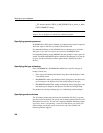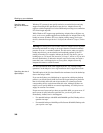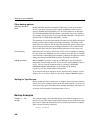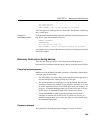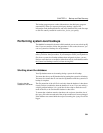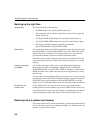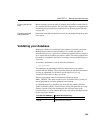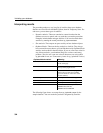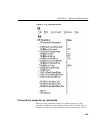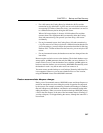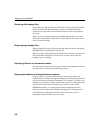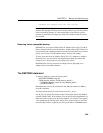
Performing system-level backups
392
Backing up the right files
Required files
You must back up the following files:
• SYSTEM dbspace file, typically named dbname.db.
• The transaction log file, which is required for system recovery, typically
named dbname.log
• The IQ_SYSTEM_MAIN dbspace file, typically named dbname.iq
• The IQ_SYSTEM_TEMP dbspace file, typically named dbname.iqtmp
• Files for any additional dbspaces that have been added to
IQ_SYSTEM_MAIN or IQ_SYSTEM_TEMP
Optional files
It is a good idea to back up the ASCII message files such as dbname.iqmsg and
the $ASLOGDIR/*.svrlog and $ASLOGDIR/*.stderr files. These files are not
required. However, if problems occur during a restore, the .iqmsg file will
prove that the database was shut down before the backup started.
These files may be useful in diagnosing the cause of the database failure you
are recovering from. Be sure to make a copy before restoring, for use in later
analysis.
Keeping your backup
list updated
It is critically important to add to your system backup specification any
dbspaces that are added to the database, whether they are in SYSTEM,
IQ_SYSTEM_MAIN, or IQ_SYSTEM_TEMP. If a dbspace is added several
months down the road, or after some turnover in your organization, you may
miss this step.
To ensure that you are backing up all the files you need, use a script for system-
level backups. In the script, before starting the backup, compare a select from
SYSFILES (for the system dbspaces) and from IQSYSFILES (for the IQ
dbspaces) to a list of dbspaces known to be in the system backup specification.
Raw devices and
symbolic links
If your database files are on raw devices, be sure your system backup is
backing up the raw device contents, not just the NAME of the device in /dev/*.
If symbolic links are used for raw device names, as recommended, be sure the
system backup utility follows the symbolic link and backs up the device.
Restoring from a system-level backup
If you must restore from a system-level backup, you must ensure that database
server is shut down, just as it was during the backup. See “Shutting down the
database” on page 391 for details.



